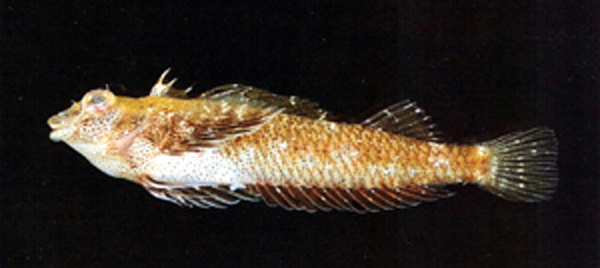| Tripterygiidae (Triplefin blennies), subfamily: Tripterygiinae |
| 3 cm SL (male/unsexed) |
|
reef-associated; marine; depth range 0 - 5 m, non-migratory |
| Indo-West Pacific: ranging to the American Samoa, north to the Ryukyu Islands, south to Australia. |
|
Dorsal spines (total): 13-16; Dorsal soft rays (total): 8-9; Anal spines: 1-1; Anal soft rays: 15-17. Greenish-yellow above becoming reddish yellow with numerous dark spots (Ref. 37816). |
| Adults occur in seaward reefs in areas of strong surge, usually associated with a coralline rocky shore. Also found on beach rock, brown algae and coralline algae in shallow water (Ref. 13227). Eggs are hemispherical and covered with numerous sticky threads that anchor them in the algae on the nesting sites (Ref. 240). Larvae are planktonic which occur primarily in shallow, nearshore waters (Ref. 94114). |
|
Least Concern (LC); Date assessed: 03 May 2010 Ref. (130435)
|
| harmless |
Source and more info: www.fishbase.org. For personal, classroom, and other internal use only. Not for publication.

